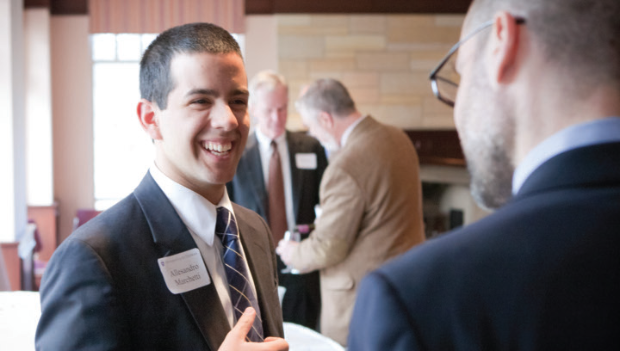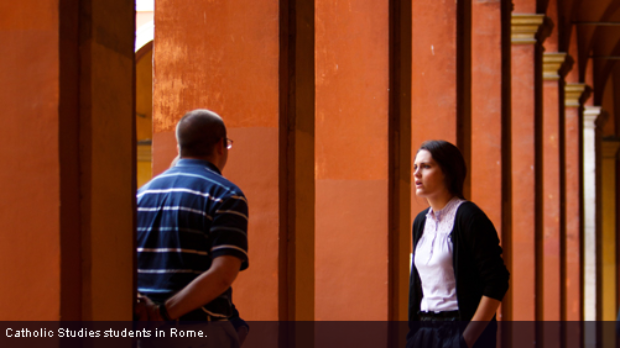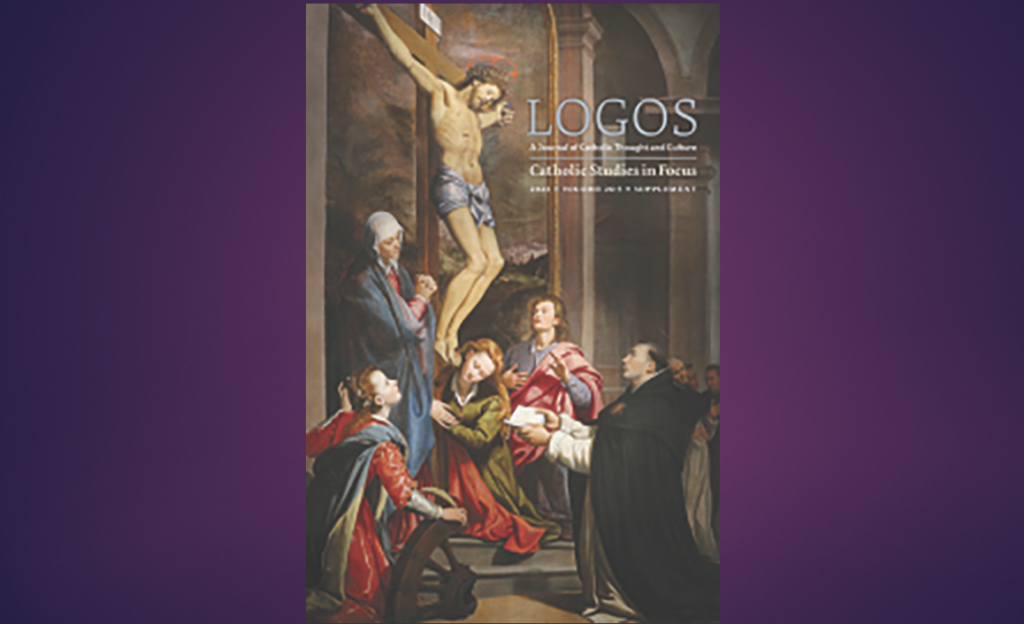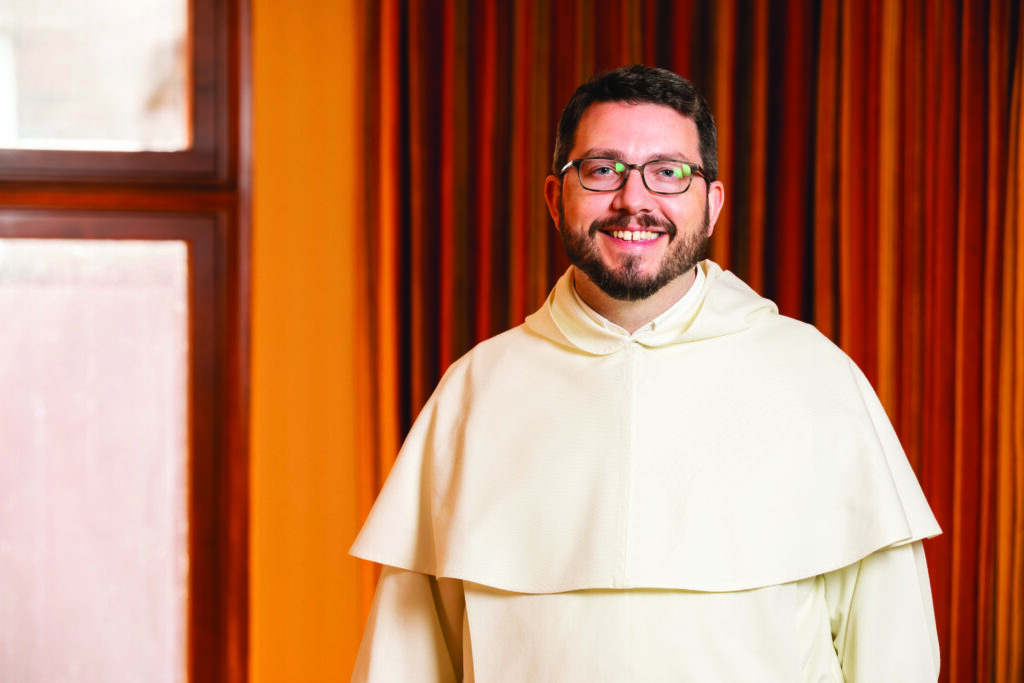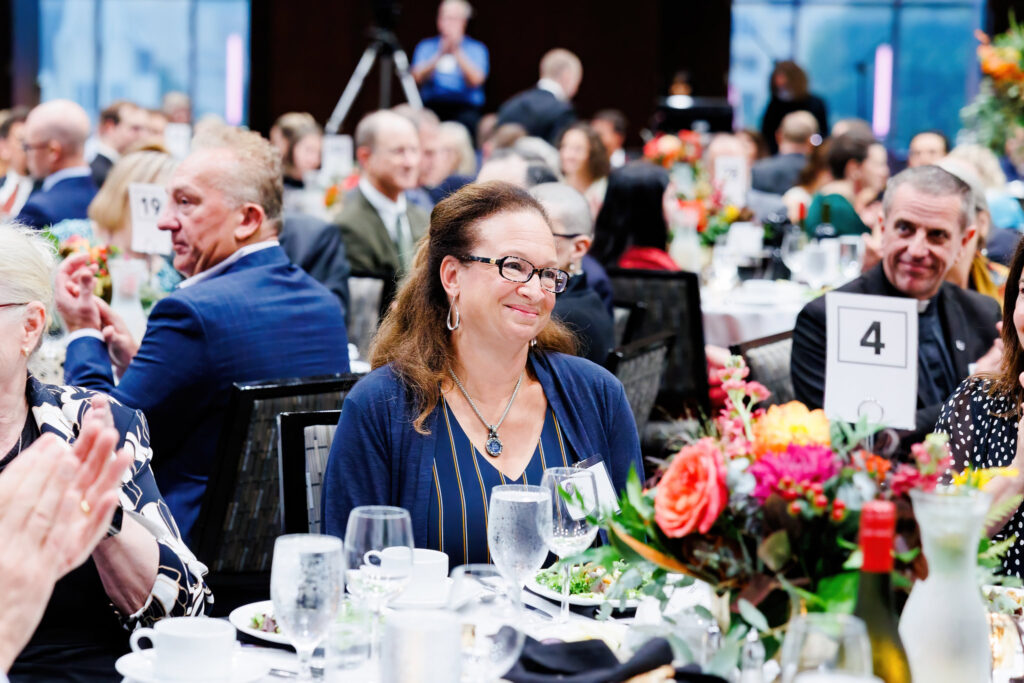Properly conceived and initiated, higher education will give public discourse a depth and breadth that will benefit all mankind according to Cardinal John Henry Newman’s The Idea of a University. “It is the education which gives man a clear conscious view of his own opinions and judgments, a truth in developing them, an eloquence in expressing them, and a force in urging them. It teaches him to see things as they are, to go right to the point, to disentangle a skein of thought, to detect what is sophistical, and to discard what is irrelevant.”
In the ongoing intellectual pursuit of engaging thought outside the classroom (see Perspectives, fall 2010), the Center for Catholic Studies sponsored four unique and varied lectures this past spring. The purpose of inviting outside speakers to the university is to remove the internal vacuum that sometimes appears within academic circles and to engage topics of importance in broad conversations. Last March, Dr. Don Briel presented Newman’s ideas in a public lecture, titled “Why Newman Matters,” as the inaugural lecture of the Catholic Studies Master of Art series Thought and Culture. In addition to the Newman lecture given by Dr. Briel, the center hosted philosopher Dr. Russell Hittinger, theologian Dr. Reinard Hütter and Julian Scott, grandson and literary executor of historian Christopher Dawson.
Hittinger’s “What St. Benedict Taught the Dark Ages: His and Ours” rested on the idea of nocturnes, defined as the night offices of the monastery. The image of darkness and “flowering in the night” provoked Hittinger to reflect on Benedict’s Rule for the monastic life and its relevance for today. Beginning with the first nocturne, called “Owl of Minerva,” Hittinger related that Benedict’s Rule is wisdom throughout the ages; its depth, width and breadth of writing, though simple and straightforward, is beneficial for every person then and now. “If Benedict’s Rule established nothing but a trade school for learning the useful arts – slightly eccentric monks who figured out how to build windmills – it would have made itself quickly obsolete. For it is in the very nature of such an enterprise to graduate its students into more advanced skills. But if this school teaches its students to awake from the mortal slumber of Old Adam, and like the Prodigal to run to the Father, no one can claim to be a graduate.” Under the second nocturne titled “Dark Ages,” Hittinger revealed that Benedict’s Rule taught his monks (and teaches us) “how to live life as a whole. Not a life of worldly success so much as one of human success. Not merely in the amount of knowledge but in its integration.” The “Curriculum” nocturne taught us that in order to acquire knowledge of the good, we should entertain a child-like disposition. Hittinger insightfully remarked that the Rule “was written for youth in a world grown old,” not a cynical world, but a world seen through the eyes of the youth, “a world that is admired just the way it appears, and is first known through a contact suffused with emotion.” Lastly, Hittinger found the fourth nocturne to be “Harkening,” a listening for the call and the summoning by Christ to discipleship and to leave the secular world behind, if only for a few moments. In sum, the Rule of Benedict is still relevant for today, teaching us to strive for the transcendental in our full humanity.
Hütter’s lecture left the medieval world far behind and concentrated on the current state of the academy in his remarks, titled “The University’s Cutting Edge – Source of Its Flatness.” Hütter explained his title by opening, “What is missing in the late modern research university and the kind of training it offers is the university’s ‘third dimension’–leisure (scholé), paideia, and genuine academic freedom.” He offered a snapshot of the current academic system, which is steeped in ambivalence and incapacity for the pursuit of truth, pervasively dependent on quantitative measures of assessment and a framework of secular reason for its internal and external communication. “These features,” began Hütter, “belong to what I regard as the university’s first and second dimensions that together constitute undoubtedly a cutting edge, but bereft of a third dimension which accounts for the late modern university’s lack of depth, in short, for its arguable flatness.” The third dimension, offered Hütter, is leisure, “in the Greek sense of scholé, the source of the familiar words ‘scholar’ and ‘scholarship’ and paideia,” defined as well-rounded scholarly education. These two practices “keep the soul of the university alive and assure that even under the specter of a comprehensive functionalization of the late modern university … that the university qua university will continue to matter – especially after the disenchantment of secular reason.” It was the practice of leisure, the making time for intellectual creativity, that Hütter believed would offset the current dimensional flatness and allow for true academic freedom. He closed with a final remark, “It is the practice of leisure that enables regular academic freedom to be realized as a freedom for excellence, which is nothing but a freedom for contemplation.”
In the third event of the spring, Mr. Julian Scott, grandson and literary executor of the Christopher Dawson collection, presented his thoughts on his grandfather in a lecture titled, “The Life and Times of Christopher Dawson.” The University of St. Thomas’ Special Collections Department houses the Dawson collection, which was a gift from Eugene and Faye Sitzmann to the Center for Catholic Studies. The Christopher Dawson collection include manuscripts of his publications, correspondence with colleagues and publishers as well as Dawson's extensive library of works on philosophy, theology, Christian education, the history of religion, Europe, the Middle East and the United States.
Read more from Perspectives
